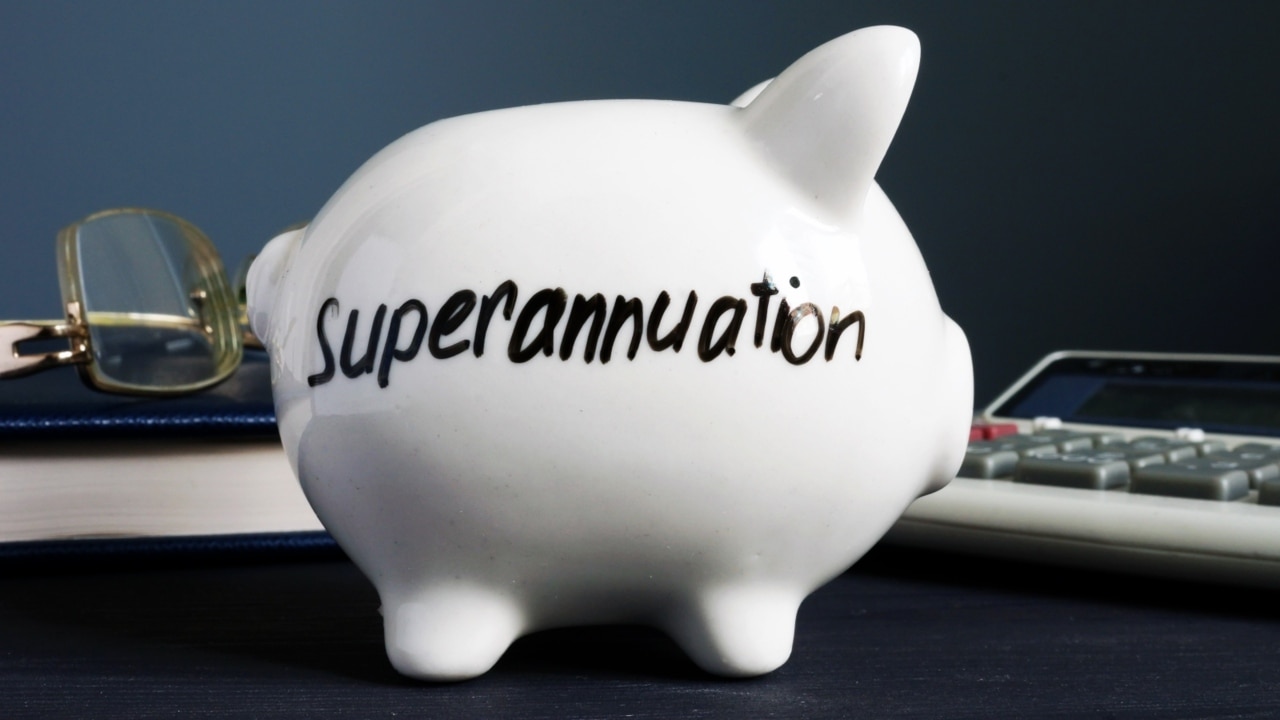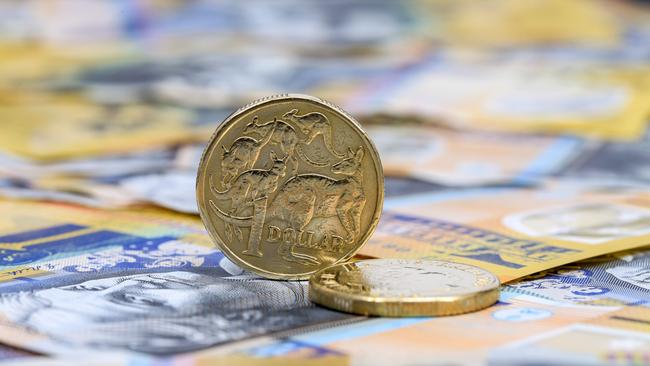Tax deductions and incentives can supercharge your nest egg
Want an early retirement? It’s vital to understand the tax rules for superannuation and how to make them work for you.

QLD Business
Don't miss out on the headlines from QLD Business. Followed categories will be added to My News.
Superannuation is commonly mistaken as an investment, when it actually is a tax structure used to hold investments.
That structure comes with many tax incentives and tax deduction opportunities that can potentially deliver tens of thousands of extra dollars at retirement – in some cases hundreds of thousands – for those who use the system wisely.
There are tax benefits for savers of all ages and income levels, and financial planners say many of them are under-utilised.
Retiring early can be achieved by injecting as much money as possible, as soon as possible, into the low-tax super environment, which later becomes a no-tax super environment for most retirees aged over 60.
Marinis Financial Group managing director Theo Marinis said Australians generally did not understand super’s tax incentives and opportunities.
“If they did, I would be out of a job,” he said.
“You can save tens of thousands of dollars in tax by taking advantage of these strategies, including the government throwing in co-contributions for you.
“If you’re saving $5000 a year in tax, you are not doing anything wrong – you are just taking advantage of the rules. $5000 a year for 20 years is $100,000, plus what it earned along the way.”
Here are six super tax breaks and other incentives that can make a big difference.
1 TAX-DEDUCTIBLE CONTRIBUTIONS
Most money that goes into your super is taxed concessionally at 15 per cent, rather than existing income tax rates of up to 47 per cent, and these concessional contributions can also deliver tax deductions.
Employer contributions and salary sacrifice are examples of concessional contributions, which have an annual cap of $27,500 per person, but people also can make personal concessional contributions and claim a tax deduction for them.

For medium and higher-income earners, putting gross wages into super rather than taking it as after-tax pay delivers significant tax deductions while boosting their nest eggs at the same time.
However, experts say be careful that your combined concessional contributions do not exceed the annual cap.
2 CATCH-UP CONTRIBUTIONS
Since July 2018 Australians have been able to make carry-forward, or catch-up, contributions to their super of the unused portion of their annual concessional caps.
JBS Financial Strategists CEO Jenny Brown said carry-forward contributions were worthwhile looking into if you had room in your cap.
They could be cleverly employed in a year where you had a large capital gain from the sale of shares and property, and could offset some or all of the capital gains tax bill.
But there are rules – including that nobody can make carry-forward contributions if their super balance already sits above $500,000.
Ms Brown said it was wise to keep on top of the limits and rules.
“If in doubt, seek advice,” she said.
3 DOWNSIZER CONTRIBUTIONS
This is a relatively new super tax break and allows people to pump extra money into super from the sale of their family home.
The reason for boosting wealth inside superannuation, rather than outside investments, is because once you turn 60 and retire, you can switch your super from the low-tax accumulation phase to the no-tax pension phase. People can now hold up to $1.9 million each in a personal account based pension, which has no tax on income, capital gains or withdrawals.
Ms Brown said the downsizer rules confused people “because it’s changed so many times”.
“You can now do it from the age of 55,” she said, providing that you satisfy the rules, which include a cap of $300,000 per person that sits outside other super contribution caps.
“Sometimes it gets too hard for people. Because the super rules keep changing, people don’t necessarily keep up with them if they don’t have to.”
4 NON-CONCESSIONAL CONTRIBUTIONS
Like downsizer contributions, these do not deliver tax deductions but do allow big chunks of wealth to enter super very quickly.
Tribeca Financial CEO Ryan Watson said making non-concessional contributions was a key strategy for savers.
“While they don’t attract a discounted tax rate, it does allow you to get additional funds into a tax effective environment, which will in turn provide a tax effective investment in time,” he said.
And we’re talking a lot of additional funds – $110,000 per year per person can be made in non-concessional contributions, and two future financial years can be brought forward. So someone who times things right could put $110,000 into their super in June, then another $333,000 after the new financial year begins on July 1.
But remember that this money could be locked away for many years.
“One of the key restrictions with superannuation is that there are strict rules around accessing the funds, and these rules are dependent upon when you were born,” Mr Watson said.
“The earliest you can access funds is age 55, but for the majority of Australians it is age 60.

“If you want to retire prior to age 60, you will need to have significant funds outside of superannuation with which to live off before you reach age 60, and can then access your superannuation via a lump sum or income pension stream.”
William Buck Wealth Advisory director Aaron Trombetta said consider building a non-super investment portfolio too, “that can continue to generate passive income from the moment you stop working”.
“Adopting an integrated approach to wealth creation is really the key to being in a position to fund an early retirement,” he said.
5 CO-CONTRIBUTIONS
Not every super tax break is designed for people with big balances or big incomes.
The co-contribution scheme effectively delivers a 50 per cent financial return for lower income earners who make a $1000 non-concessional contribution each year, because the federal government will add $500 of its own money as a reward.
The maximum co-contribution goes to people who earn less than $43,445 this financial year – a great tool for part-time workers or young employees to fuel their nest eggs with a bang and supercharge decades of growth through compound interest.
At least some co-contribution is possible for people aged under 71 and earning less than $58,445.
“The government co-contribution, of up to $500 on a $1000 contribution for low to middle income earners, can provide a strong return on capital,” Mr Trombetta said.
6 SPOUSE CONTRIBUTIONS
Anyone with a low-income spouse can get up to $540 back from the Australian Taxation Office via a tax offset if they pump in $3000 of money into their spouse’s super account.
For the full offset, the spouse must earn less than $37,000, and it phases out completely at $40,000.
The years of spouse contributions could claw back $5400 from the ATO while boosting a low-income partner’s nest egg by $30,000, which could compound and multiply over decades.
“Adopting the appropriate strategies has the potential to significantly boost your nest egg when you consider that the maximum tax rate within super is 15 per cent, compared with the highest personal income tax rate of 47 per cent,” Mr Trombetta said.
“Taking into account the compounding effects, for some people the additional tax effective returns generated could potentially fund years of their desired retirement lifestyle.”
7 TAX-FREE PROPERTY INVESTMENT
You’ll need a self-managed super fund for this one, but the benefits can run into hundreds of thousands of dollars.
Residential property investors typically pay capital gains tax when they sell. CGT usually adds half of your profit, or capital gain, to your taxable income in the financial year an asset is sold. It can potentially push total income into the top tax bracket of 47 per cent – and for a $250,000 net capital gain that could be extra tax of $117,500.
But if you buy a property in a SMSF then hold it until you retire after age 60 and move your super to pension phase, and the CGT payable drops to zero.

“Super is the lowest tax vehicle available but requires care and understanding in making it work most effectively for you,” Mr Trombetta said.
“One of the biggest risks is making a decision without seeking personalised advice from an experienced professional.”
Mr Marinis said there was plenty of information available online about super tax benefits and options, but sometimes it was best to “speak to someone” in the know.
“Most super funds have got online information that explains the concepts, but if you don’t understand how it works it means nothing to most people,” he said.
Tribeca’s Mr Watson said professional advice could help prevent the penalties imposed on super mistakes.
“Given that the rules around superannuation and generating tax breaks can become complicated, please tread with caution,” he said.
“As with anything in our life of significant importance, always seek professional advice.”
More Coverage
Originally published as Tax deductions and incentives can supercharge your nest egg





